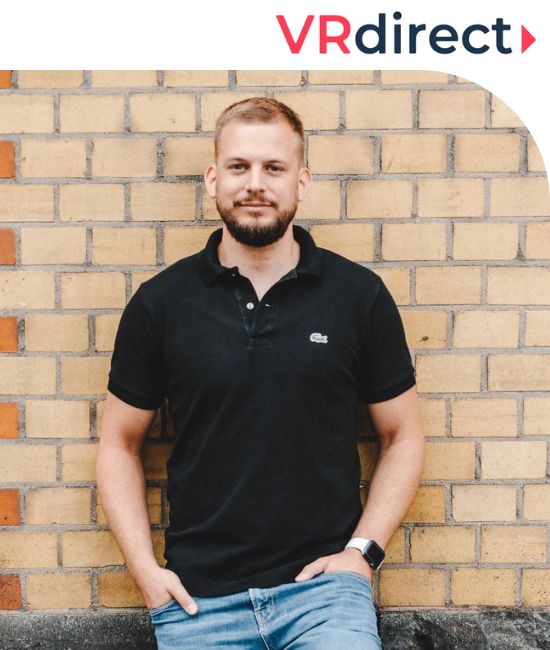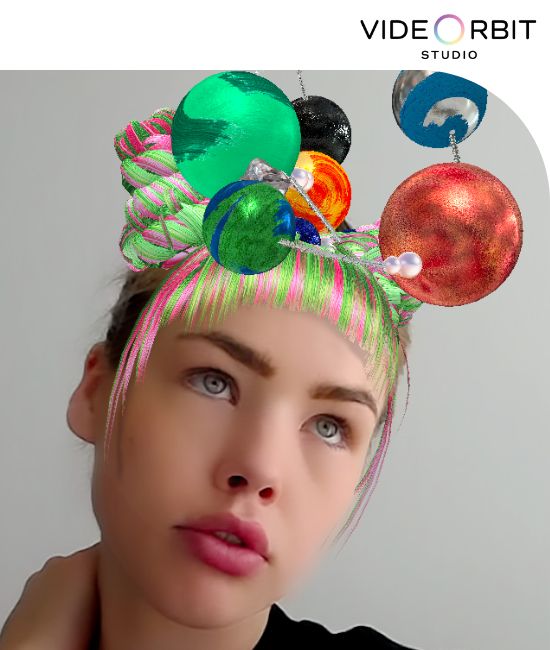09:00 AM - 09:25 AM
Description
An exploration of the skills and strategies that are necessary to create stand-out experiences in the fast-paced and disruptive world of AR creation. Led by Luke Hurd and Lianne Baron, this presentation will cover how Creators tailor large-scale AR experiences to meet the needs of different audiences, using AR installations at Coachella as the backdrop.
If you're a beginner or an experienced AR creator, this is sure to provide valuable insights that you can use to enhance your skills, stay competitive and grow your career.
Speakers


09:00 AM - 09:25 AM
Description
Both large and small companies are looking at VR with AR passthrough MR. The use of smaller and smaller optics, particularly systems using pancake optics, seems to have accelerated this trend. Everything that works well with Passthrough MR is a major problem to solve in Optical MR and vice versa. This presentation will discuss the optical, display, and human factor issues associated with Optical MR compared to VR with Passthrough MR.
Speakers

09:00 AM - 09:25 AM
Description
As immersive technologies take on greater roles in our training, education, and healthcare, excluding people with disabilities carries more legal and economic risk than ever before. We're trapped in a vicious cycle of exclusion that threatens to deepen inequity, limit XR's potential, and hurt your bottom line. But we can break free!
XR Access' Dylan Fox and Danielle Montour will share why accessibility is vital to the success of your application. You'll learn about the fundamental principles of codesign and modularity, the surprising link between accessibility and artificial intelligence, and best practices for addressing specific disabilities. Finally, you'll learn how XR Access has been working to end the cycle of exclusion.
Speakers


09:00 AM - 09:25 AM
Description
Andy Trainor, former Chief Learning Officer at Walmart, will cover the good, bad and ugly experiences and lessons learned as a leader introducing immersive learning into a fortune 1 company.
Topics covered will include:
• Creating and selling the initiative
• Breaking down the project into deliverables
• Mistakes that could have been avoided
• Success stories
• The bridge from a single successful project to established tools and methodologies in production
Speakers

09:00 AM - 09:25 AM
Description
In this session, Dijam Panigrahi and Baskar Banerjee, co-founders of GridRaster, will explore the impact of precision 3D AI on industrial Augmented Reality (AR) applications. The discussion will center around the value AR solutions, characterized by high precision 3D
scanning, object tracking and millimeter alignment, can bring to customers in aerospace, defense, and the wider industrial sphere.
A major part of the dialogue will revolve around the integration of 3D Artificial Intelligence (AI) in AR solutions. Panigrahi and Banerjee will highlight their practical applications in fields like automation, robotics, and digital twin scenarios. Mr. Panigrahi and Dr. Banerjee will also walk attendees through the unique advantages of cloud-based architecture, emphasizing its scalability, security, and ability to ensure a seamless digital thread, thereby streamlining the deployment and operation of immersive enterprise applications.
The primary goal of the session is to broaden the attendees' understanding of AI-backed AR technologies and their current and potential impacts on the aerospace, defense, and other industrial sectors. It's an invitation for participants to become a part of the ongoing conversation about the practical uses and future possibilities of these innovative technologies.
Speakers


09:00 AM - 09:55 AM
Description
In this exciting panel we will be talking to the game legends, Survios, about how they collaborated with Qualcomm and T-Mobile to develop the next generation of AR gaming with the Puzzle Bobble game.
We will explore how Survios utilized the Snapdragon Spaces platform to develop and deliver an outstanding demo of Puzzle Bobble. What game mechanics were used and how the platform was utilized. What considerations made this IP attractive for developing on the Snapdragon Spaces platform.
We will hear from an expert from Qualcomm on the features of the Snapdragon Spaces platform that were used.
We will also hear from T-Mobile’s XR lead, Cerilenne Menendez Mendoza about how connectivity and the T-mobile network has powered this 5G XR game.
Speakers




09:00 AM - 09:55 AM
Description
XR technologies present several opportunities to harness its capabilities to create a better world. This means building technological processes, infrastructure and services, discovering safe protocols and using the technologies to prevent harm to humans and societies.
XRSI is working together with many organizations to build some of these protocols and going as far as ensuring trust remains at the center of it. The panel will discuss various multidisciplinary aspects of ongoing research and development efforts that have significant impact on Public Safety. The panel brings together experts from Federal agencies like FBI, Standard Developing Organization like XRSI, and global non profit Cyber Bytes Foundation, each sharing their vision and contributions on how their collective efforts are helping shape the future and safeguards citizens in the US and worldwide.
Speakers




09:30 AM - 09:55 AM
Description
As the world of XR rapidly evolves, emerging passthrough MR experiences are opening up a new realm of possibilities. These new experiences allow users to clearly view and interact with virtual objects overlaid onto the real world in real-time. Combined with hand tracking technology, passthrough MR has the potential to revolutionize the way we interact with digital content and tools.
This talk will explore the latest developments in passthrough MR and hand tracking technology and how they can be leveraged to create the next generation of XR headsets, enterprise applications, and entertainment experiences. We will discuss the challenges and opportunities of designing solutions that take advantage of these technologies, including issues related to user experience, interaction design, and performance.
We will also showcase some of the most exciting current and future use cases for passthrough MR and hand tracking in the enterprise space, including remote collaboration, training and education, and real-time data visualization. Finally, we will explore the implications of these technologies for the future of work and productivity, and discuss the potential impact on industries ranging from healthcare to manufacturing to entertainment.
Whether you are a designer, developer, or business leader interested in the latest developments in XR technology, this talk will provide valuable insights and inspiration for how to leverage passthrough MR and hand tracking to create compelling entertainment experiences and transformative enterprise applications.
Speakers

09:30 AM - 09:55 AM
Description
Almalence presents a set of ISP techniques enabling high picture quality beyond optical hardware limitations in VR/AR head-mounted displays by dynamically compensating for the optical system deficiencies specific to the optical path at a given eye position.
Optical hardware design constraints inherent to head-mounted displays compromise the image quality and visual experience in VR/AR. Even the latest-and-greatest devices retain the common flaws spoiling user experience: poor image detail, blur and color fringing outside of the small “sweet spot,” geometry distortion when moving the gaze direction, and low picture resolution of the outer world captured via pass-through cameras.
In the session, we will explore why dynamic optical aberrations correction, distortion correction, and super-resolution algorithms are indispensable to achieving high visual quality in head-mounted displays. We will also see examples of picture quality improvement those computational techniques produce on the highest-end VR displays from Pico, Varjo, and HP.
Speakers

09:30 AM - 09:55 AM
Description
The technology of virtual worlds is constantly evolving, and one of the most significant changes in recent years has been the rise of spatial chat allowing participants to communicate in a three-dimensional virtual space. But spatial chat is more than just a tool for enhancing immersion. In this talk, we will explore how spatial chat is changing the way participants communicate and collaborate. We will discuss the benefits of spatial chat, including its ability to facilitate teamwork, improve experiences, foster social connections, and the potential for future innovation in this area.
Speakers

09:30 AM - 10:25 AM
Description
Coming Soon!
Speakers




09:30 AM - 10:25 AM
Description
The way we work is changing at a rapid pace, propelled by the fast adoption of digital technologies, and normalization of remote and hybrid working.
Organizations are already boarding the XR bandwagon, especially for hard skills – and there is growing need to integrate XR in other areas including soft skills, workplace learning and capacity building, as well as the overall employee experience and motivation- which are enhanced by the use of VR and AR.
This comes at a time when the younger generation is already using and becoming more comfortable with XR, thereby setting an expectation that organizations utilize these tools when they become part of the workforce.
This panel will discuss the changing workplace and the various dimensions of integrating XR within organizations giving food for thought to reimagine the future of work.
Speakers




10:00 AM - 10:25 AM
Description
Craig will present an outlining of how Contact CI has come to define Multi-Force Ergonomic Haptics, sharing our approach and the story of building Maestro EP, all while providing examples and evidence for why MFE haptics are important and impactful in generating an immersive sense of touch for a range of VR/AR users.
Speakers

10:00 AM - 10:25 AM
Description
Shared AR is a foundational service for our AR future and opens up new social opportunities today. Learn more about how Niantic can enable you to create shared experiences with 8th Wall (WebAR) and Lightship ARDK (Unity).
Speakers

10:00 AM - 10:55 AM
Description
VR and AR tools have provided numerous ways to align and expand the physical and virtual, and our interpersonal interactions can be shaped by these experiences. New research from StanfordVR has provided additional context to our learnings about avatars and virtual environments. Whether you are a developer, artist or stakeholder, come discuss the latest with our panel of industry leaders, researchers, artists, and visionaries.
A variety of perspectives will be taken into account, from philosophy to AI-generated content, platforms, avatar embodiment, and ethics. Based on audience questions, the group will also cover cross-reality methods for training, entertainment, and personal development as takeaways for creating effective and memorable experiences.
Speakers




10:00 AM - 10:55 AM
Description
The grand challenge of the 21st Century is to create socially and ethically adept hybrid networks of humans and machines. The augmentation of human abilities and global ecological systems will play a critical role in our future. AI agents are already deeply integrated into society and integral to many activities from dating, driving, coding, to policing and Large Language Models and Multimodal AI have already changed the way we communicate, work, and play. But, while Augmented Ecologies are now reaching beyond industry experts and scientists to the rest of us with generative AI, these new hybrid ecologies between humans and machines will diminish individual human autonomy and agency if we do not empower people to create, manage and participate in them. This panel will look at this grand challenge for the future of an Augmented World!
Speakers




10:00 AM - 10:55 AM
Description
Brought to you by XR Guild, this panel is a cross-section of AR and XR teams using a mix of technologies for immersive play, immediate information, real-time training and augmentation of the workforce. Whether the use cases are public or private, the inquiries we engage when creating new AR and XR experiences are quite similar:
* How do we engage a process of transparency and informed consent when sharing data?
* Where do individuals and collaborative teams need insight into where data is shared or used?
* How do we effectively communicate how data is used in research and development of new tools?
* Where do we engage conversations around ethics, privacy, data sharing, identity and policy together across our industries?
* How do generative tools and AI fit into our ideas of informed data sharing and consent with attribution?
* What role can the public and the creative industries play in shaping a more cohesive and meaningful immersive and interactive experience for the public? Where are the gaps in that experience today?
* When there are disagreements between companies, nations or industry perspectives, how are these decisions being made today, and how can we be doing this work more effectively together?
This panel will feature some of the specialists and speakers from the board and leadership of XR Guild, subject to their availability (and ensuring that these are not repeats from other panels or talks). Evo Heyning will moderate this panel with a diverse mix of AR/XR voices contributing.
Speakers




10:00 AM - 11:10 AM
Description
Join us for this very special panel featuring top creators in XR building AR apps and filters for the world to enjoy. Find out more about their latest projects in a lightning round where they'll each be given only 4 minutes to present in an extended "elevator pitch" sort of format.
Speakers









10:00 AM - 03:00 PM
Description
Join us in the Expo Hall and Playground areas to meet sponsors and exhibitors, discover the latest AR/VR tech, check out the newest start-ups, make connections, and more.
10:10 AM - 11:05 AM
Description
This panel will discuss the emergence of XR theatre production, including VR and AR integration with narrative original and adaptive works, as well as how to blend XR technologies with live and virtual audiences. The theatre world has developed communities for live, virtual productions that include multi-site AR and VR integrations, as well as hybrid events that deliver mixed effects for remote audiences.
This session will include some of the leading producers and technologists in global immersive theatre and dance, including Pip Brignall, from The Round; Kiira Benzing, with Doubleeye Studios; Scarlett Kim with Oregon Shakespeare Festival, and Chris Pfaff, Chris Pfaff Tech Media LLC (moderator) and will include both live and recorded demos of immersive theatre.
Speakers



